
John Harris designed the Metropolitan Hotel for Khalifa Al Habtoor
John Harris also designed:
Dubai's Original Metropolitan Hotel

Courtesy John R Harris Library
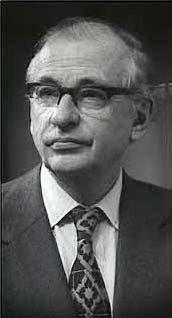
John Harris developed Dubai's First Master Plan.
The Harris Master Plan addressed the fundamentals:
a map, a road system and directions for growth.
This plan guided Dubai’s modest early development until the discovery of oil in 1966.
It demonstrates why Sheikh Rashid chose to hire a young and largely unknown architect instead of more experienced British Town Planners.
John’s plan accepted the logic and economies of the existing settlement and proposed a road system that would weave the old town into Dubai’s future growth.
He did not try to impose preconceived ideas of urban form
or raze the old city, as had happened elsewhere.
John walked down every track in the old town.
In the 1950s, John Harris and his wife formed a successful Architectural partnership together. Their first major achievement was winning RIBA's international competition for the design and supervision of Doha's new State Hospital in 1952. Their design was chosen for its intelligent approach to climate and environmental concerns which was advanced thinking in 1950s. In 1959 John Harris was introduced to Sheikh Rashid by then British Political Agent Sir Donald Hawley. John rapidly won Sheikh Rashid's trust and became the Ruler's Expert Adviser on Dubai's new Master Plan. He developed a means of working that wedded Sheikh Rashid’s ambitions with an architecture both respected and respectful. During modern Dubai’s founding, John Harris’s work went largely unnoticed by British and European press and by fellow architects and planners. John’s seemingly anonymous work paralleled the quiet but steady early progress of Dubai rising from the open desert.
John Harris’s tasks in 1960 in developing Dubai's Master Plan were daunting and simple. Dubai had no paved roads, no utility networks or modern ports of supply. Water was only available from cans brought into town by donkeys. Traveling to Dubai from London took several days in unreliable piston-engine planes with overnight stops. Communication was also difficult. There were few telephones and cables were sent by radio. When oil was found in August 1966 he witnessed the presentation of a “jam jar” full of oil to Sheikh Rashid in the Majlis. Sheikh Rashid told John to progress with plans for the Rashid Hospital and subsequently other hospitals, a modern school, banks and commercial buildings. The Master Plan was also updated.
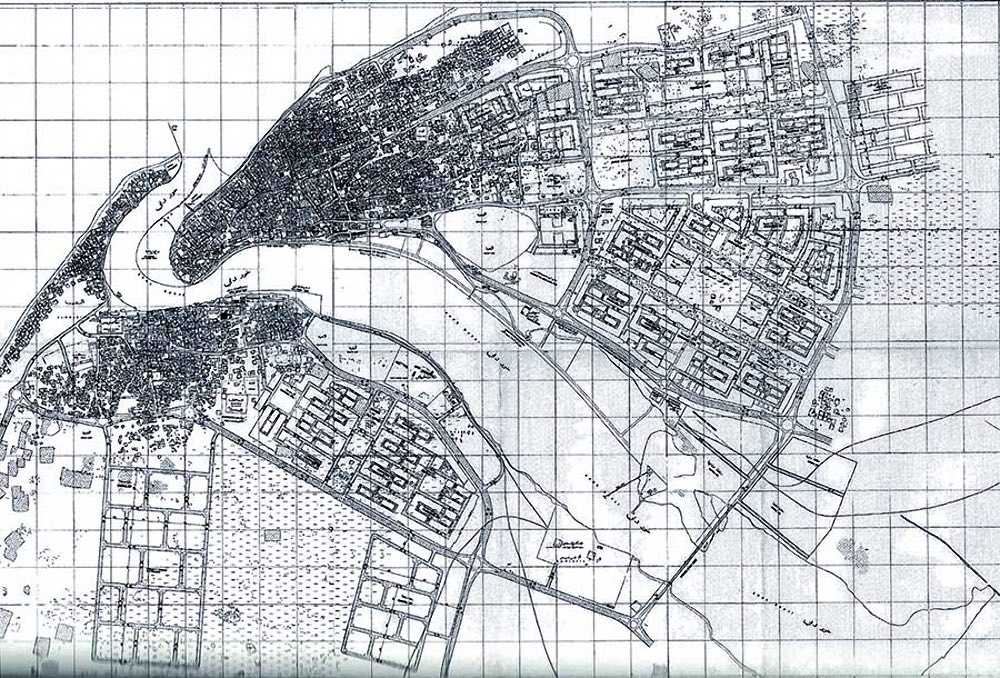
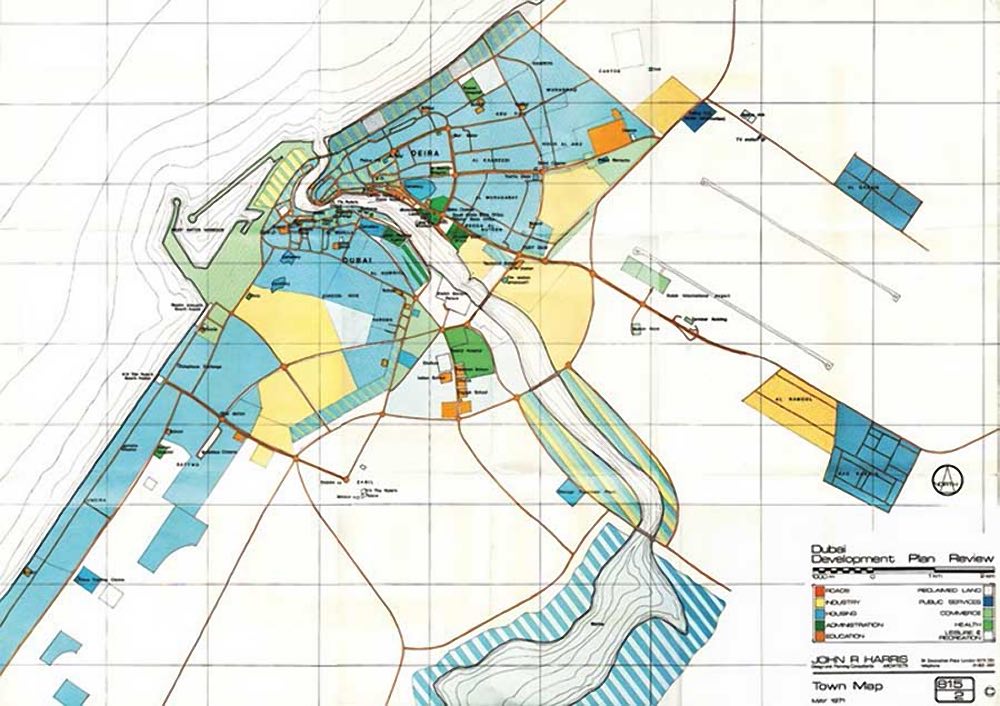
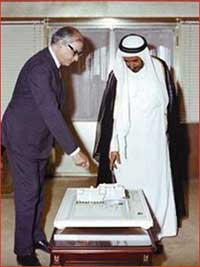
In the 1970s John Harris and his firm designed the Dubai World Trade Centre, conceived even before the first World Trade Center in New York City had been completed. Harris recalls how he was introduced to Dubai’s important project: “I was leaving Dubai and flying back to London. My suitcase had been placed on the new hoist at Dubai’s international airport and sent down to the loader below. At that moment a hand rested on my shoulder and a voice said, ‘Sheikh Rashid wants to see you.’ I explained about my luggage, but of course my suitcase went one way and I went the other.
The World Trade Centre became Sheikh Rashid’s final tribute to his state. John dedicated much of the next seven years to its completion. At 40 storeys it became the tallest building in the Arab world for 20 years and Dubai’s first emblem. The Queen’s presence at the opening of the building in 1979 heralded the start of Dubai’s global success — the city had finally been born.
Today in fast-paced Dubai one must search to find all of John Harris’s contributions to the city. The World Trade Centre still stands and traffic still negotiates the roads that Harris laid out on paper. The tower is preserved and incorporated into a new Master Plan. John’s World Trade Centre may well be not only the city’s first skyscraper, but one of its most loved.
Abridged from an Article in The Times UK March 21, 2008
(NB: Page now only accessible to Registered Readers)
John Harris' obituary in The Times (UK) conveys a romantic but mythical version of Dubai World Trade Centre's origins
In 1974, Dubai Airport hosted a "British Building and Construction Equipment Exhibition". Exhibition was designed by John Harris.
On March 14th 1974, Queen Elizabeth of Great Britain flew into Dubai where her aircraft was to refuel before flying on to Indonesia. Sheikh Rashid and John Harris met her on arrival and invited Queen Elizabeth to tour the Exhibition.
Later the Queen departed Dubai and John Harris returned to Dubai Airport to fly back to UK. At that point John Harris received the "tap on his shoulder" and the message Sheikh Rashid wanted to meet with him. As a result of the Queen's visit, Sheikh Rashid became convinced Dubai needed an Exhibition facility and charged John Harris with preparing a proposal. John flew back to London and made one of his Architects responsible for designing the Exhibition facility.
Draft proposal comprised "two interlocking six storey pyramids" - one housing a hotel, the other convention facilities and offices. John Harris expected Sheikh Rashid to reject the proposal as too costly. Instead, Sheikh Rashid rejected the proposal as being understated and insisted on a skyscraper. At that time Trade Centres were in vogue and starting to appear in New York, Singapore and Tokyo for example. John Harris decided to visit these Trade Centres.
In 1974 New York's Trade Centre was under construction when Harris visited but he went on to Singapore and Tokyo. His in initial proposal for Dubai's World Trade Centre was a twin Tower design but that proved impractical so the design was amended to a single tower with two low rise exhibition buildings. Sheikh Rashid approved this design.
NOTE: Photograph in The Times is of Sheikh Rashid and John Harris viewing the "two pyramids" proposal Sheikh Rashid rejected.
Photo was taken as part of a publicity project before the Dubai World Trade Centre design was finalised.
No location had been identified during the Trade Centre's initial design phase. Positioning the Trade Centre on Dubaiside adjacent to Port Rashid and Shindaga Tunnel was considered but rejected due to flight path restrictions and road traffic conditions. Dubai Municipality suggested a location inland from Dubai Airport but that was too near the Sharjah border.
Meantime Sheikh Rashid had been acquiring land adjacent to the Abu Dhabi Road on the outskirts of Dubai. The land was also next to the Badiyat Road which was the route that was used to transport rock to Port Rashid. Sheikh Rashid had acquired more land than was need for his Trade Centre
It was on this Sheikh Rashid owned land that the Dubai World Trade Centre was built.
Summarised from "Showpiece City - How Architecture made Dubai by Todd Reisz"
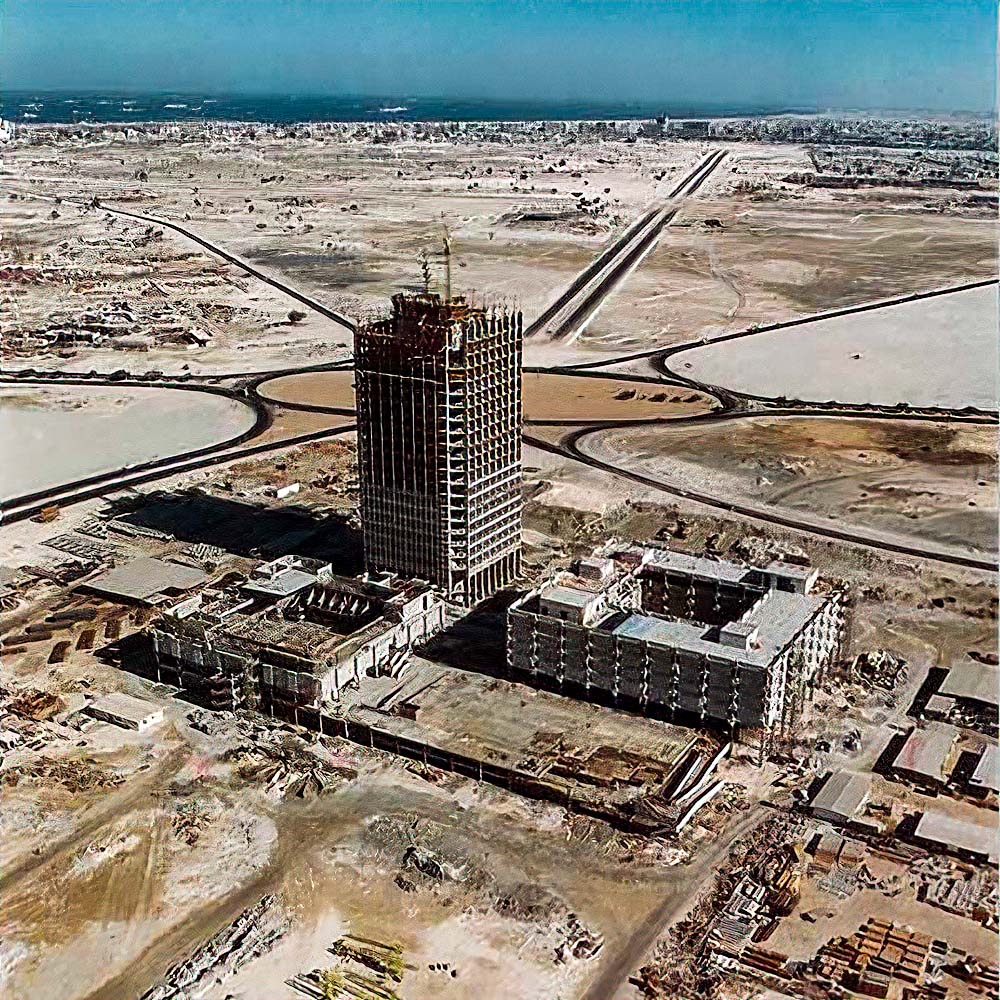
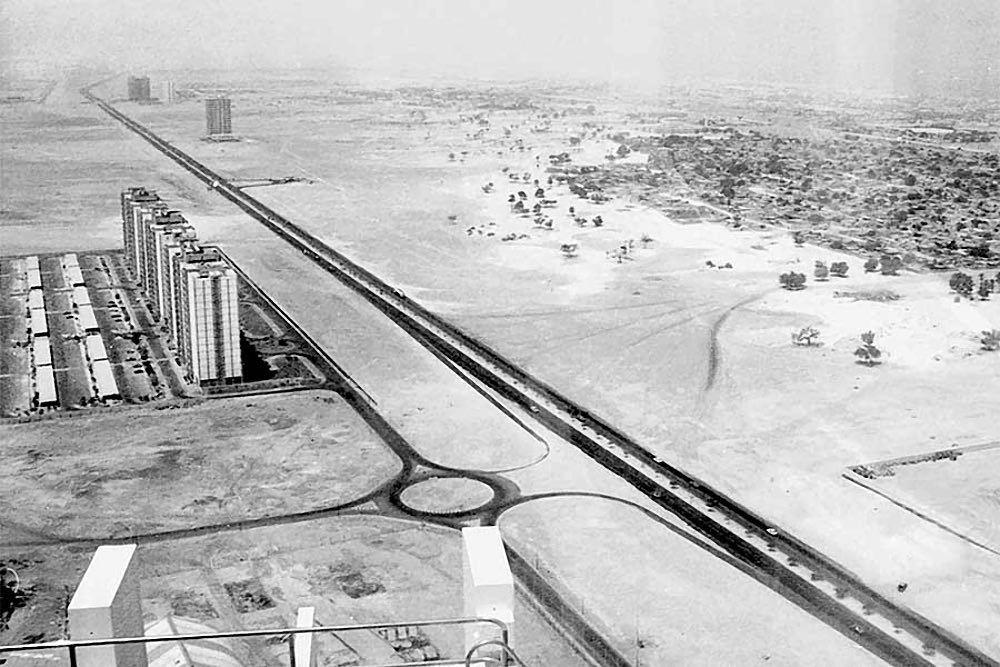
Dubai 1979
John Harris's first Dubai Master Plan focused on developing Dubai as it used to be in 1960.
The cost of buying existing land and lack of available land within the town boundaries led to several rethinks of the Plan, the last being in 1971.
Irony is John Harris designed World Trade Centre was seen as being "out of town"
Yet its existence and ready availability of land on either side of the Abu Dhabi Road meant this area developed instead
Sheikh Rashid's decision to build Dubai's World Trade Centre in this location has lead to Dubai's modern development.